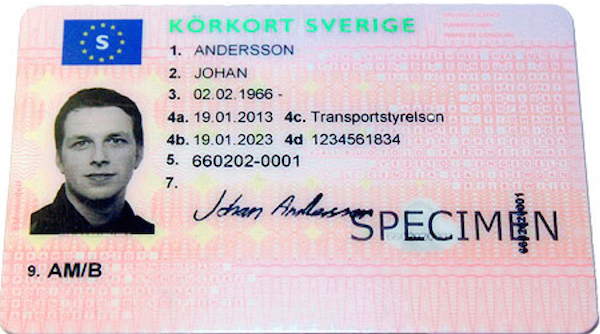Today, I learned once more that:
One of the most abstract things in our world is also something that we rely on the most. I am thinking about the so-called fourth dimension, time. Due to the earth’s rotation around its own axis, the world has been divided into 24 time zones, with the meridian that crosses the Greenwich observatory in England used as a starting point for the division, and thus establishing Greenwich Mean Time (GMT), nowadays mostly named Coordinated Universal Time (UTC).
Due to its subcontinental size, Brazil has four different time zones, which are related to the official Brazilian time in the Federal capital of Brasília. The following times apply as standard times:
- Brasília time – 2 h (UTC-5 h): State of Acre, and the Southwestern part of the state of Amazonas. The proportion of people living here is only 0,5 % of the country’s whole population (a little more than 1 million people). This time zone covers only about 6% of the Brazilian territory (although it is about the size of France).
- Brasília time – 1 h (UTC-4 h): States of Mato Grosso, Mato Grosso do Sul, Rondônia, Roraima, and the rest (main part) of Amazonas. 5% of the country’s population live here (about 11 million people). The area is big, 34% of the land area of Brazil (thus larger than Argentina).
- Brasília time, BRT (UTC-3 h): Federal District (which includes Brasília); and also the states in the Southeast Region ( Espírito Santo, Minas Gerais, Rio de Janeiro, and São Paulo); the South Region ( Paraná, Rio Grande do Sul Santa Catarina, and Rio Grande do Sul); and the Northeast Region ( Alagoas, Bahia, Ceará, Maranhão, Paraíba, Pernambuco, Piauí, Rio Grande do Norte, and Sergipe) as well as the states of Amapá, Goiás, Pará, and Tocantins. Almost 94% of the whole Brazilian population live in this time zone, which also covers about 60% of the country’s land area.
- Brasília time + 1 h (UTC-2 h): A few small offshore Atlantic islands, namely Fernando de Noronha, with 2,837 inhabitants and 0,0014% of Brazil’s population, an the non-populated islands of Trindade, Martim Vaz, Rocas Atoll, and Saint Peter and Saint Paul Archipelago.
The reason I am mentioning this today is that yesterday at midnight in Brasília, some of the states mentioned above, namely the Federal District and the 10 Southernmost states (Rio Grande do Sul, Santa Catarina, Paraná, Mato Grosso do Sul, São Paulo, Rio de Janeiro, Espírito Santo, Minas Gerais, Goiás, and Mato Grosso) ended the period of Daylight Savings Time (DST), also called Summer Time, that had been valid since October 18, 2015. The population in those areas account for 64 % of the total Brazilian population.
DST was used in Brazil for the first time in 1931, but from then on there was no consistency in when it was applied. It was only in 1985 that DST was instituted and followed on a regular, annual base, normally between the third Sunday of October and the third Sunday of February the subsequent year. However, Carnival and general elections have influenced on different start and end dates on some occasions.
One interesting observation that can be made is that the change always happens around midnight Brasília time, which creates a big confusion about which day it is at a given time. To me, the European rule of making the change at 02:00 / 03:00 seems much more logical.
However, there are people that oppose to the use of DST. As an example, there are currently three different propositions in the Brazilian Congress that want to forbid the use of DST. One of those propositions was written by congress man Valdir Colatto from Santa Catarina. Here are his arguments:
- An institute of cardiology performed scientific tests about how DST affects the people, and they found an increase in health problems, from hypertension to diabetes, sometimes also depression.
- During DST, the children learn less in school, because they have to wake up earlier.
- He normally needs to wake up at 04:30 on Monday mornings, so that he can take a plane from his home town, Chapecó, to Brasília an hour later. During DST, he has to wake up at 03:30 solar time, an hour earlier due to a decree from the President of the Republic.
- He responds to the official argument, that the use of DST saves energy, that nobody notes that difference in their electricity bill.
- According to him, a survey performed on the internet resulted in that 80 % of those that responded to the survey said that they were against the use of DST.
Solution to Riddle # 1 (Two blind men), posted on 2016-02-19
When the socks are sold in the store, they are also grouped together in pairs. Thus, it is easy to grab one pair, separate the socks and place one each in each of the two men’s bags. Continue doing so, and eventually you will have two blue socks, two red socks, two pink socks, two green socks, and two orange socks in each bag.
I have already told this riddle to many people, but only one person could ever solve it, and it took only 15 seconds! This is a tribute to my good old friend, the chemist John Snyder, one of the most intelligent people I know!
The riddle was first proposed by Kim Nasmyth, Professor of Biochemistry at the University of Oxford, to explain how chromosomes divide in cell division, see reference # 3 below.
Riddle # 2 (The pill roulette)
You suffer from a temporary disease, which you have to treat by taking one pill every day during seven days. So the pharmacist took your order and gave you the pills. You are just about to take the first pill, when you receive a telephone call from the pharmacy.
You are informed, that the attendent mistakingly gave you eight pills, the seven you need and also an eighth one, that has the same appearance as the other. But it is poisonous and furthermore it weighs a little bit more than each of the other seven, undetectable by assessing it in your hand, but sufficient to be determined by a precision scale.
Luckily, you are in a laboratory which has such a scale, an old analogue weighing scale with two pans for high precision weight measurement. The problem is that you will only be able to perform two measurements, after which the scales will not work any more.
Here is a drawing of the scales you can use:

A two-pan balance scale to be used in riddle # 2
So how do you solve this riddle, to identify and discard the poisonous pill, with only two comparative measurements? A solution to this riddle will be published next Saturday, 2016-02-27. The first person that comes across the correct solution and sends it to medieborgaren@sjson.com will receive an honorary mention.
… That’s what I learned in school !
Refs.:
1: Time in Brazil
2: Horário de verão acaba à meia-noite deste sábado
3: How chromosomes split in cell division
+: What did you learn in school today ?













